The importance of Riverfly monitoring
In 2021, we set up a monitoring group at Falls of Clyde Wildlife Reserve to survey the River Clyde, running through the reserve, to get a picture of how healthy the river is here. We feed our data into The Riverfly Partnership, a network of organisations working together to monitor the health of the UK’s rivers.
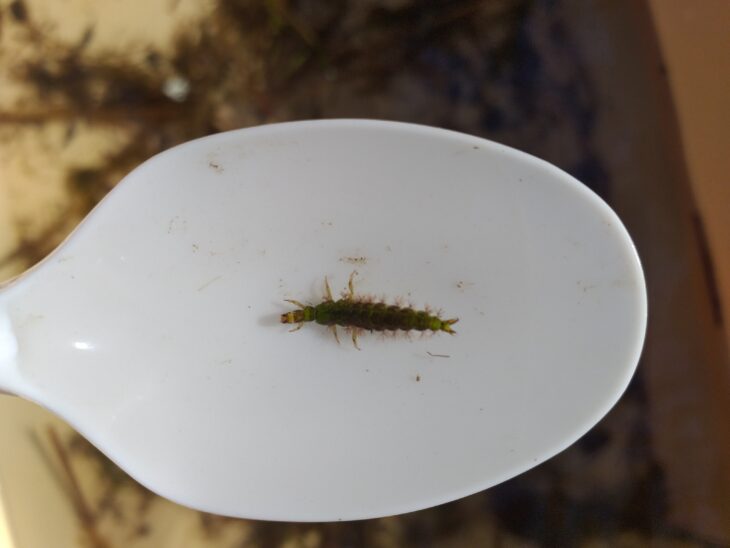
We carry out a timed kick sample to collect freshwater invertebrates. This disturbs the sediment in different microhabitats within the river channel and the displaced invertebrates are collected. This method increases the chances of collecting a variety of invertebrates that live in different places. Some live in gravelly sediment on the bottom and others cling to rocks in fast flowing water.
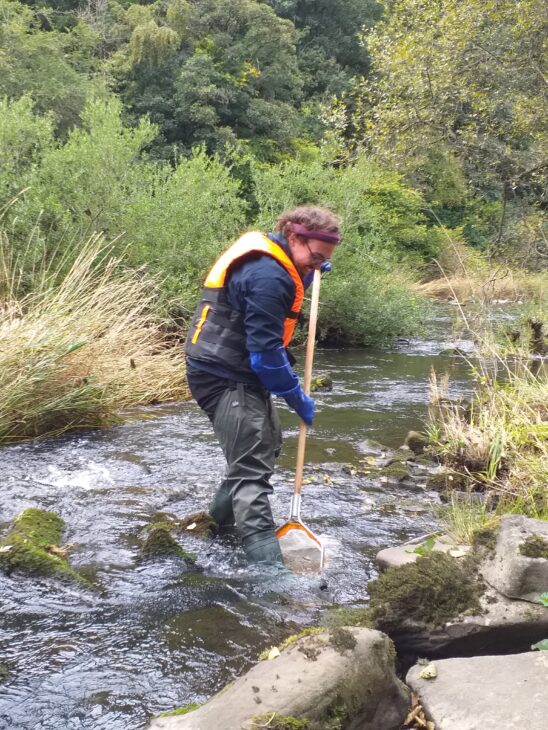
The sample is sorted into different types of invertebrate, and counted: cased and caseless caddisflies, four types of up-wing fly larvae, stonefly, and freshwater shrimp. All the invertebrates we count are larval forms of flying adults, except for freshwater shrimp. These invertebrate groups are counted because they are easy to catch, are present throughout the river channel and are sensitive pollutants in the water.
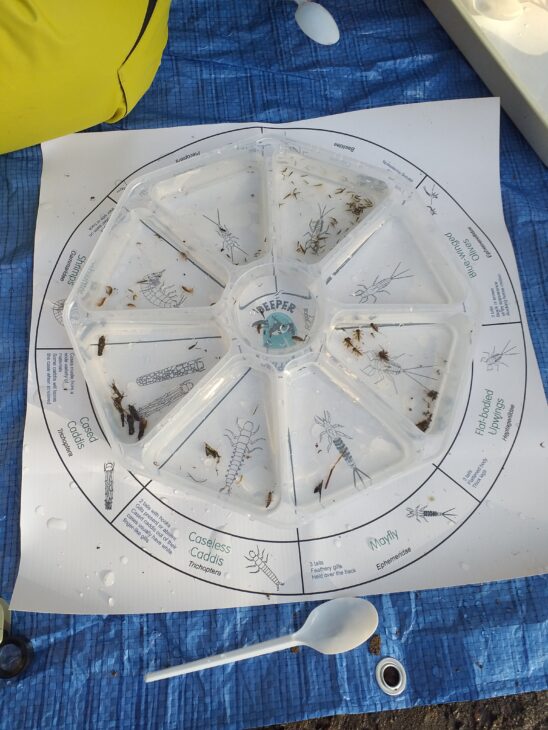
We identify the animals by looking at their physiology and how they move. The four up-wing fly larvae all have three tails, but mayfly (Emphemeridae) have feathery gills on their backs and swim vigorously, whereas the flat-bodied (Heptageniidae), have plate like gills and crawl about on the bottom of the sampling tray. Their flattened body and stout front legs give them the appearance of tiny wee body builders. We often use a hand lens, as the creatures can be only a few millimetres in size!
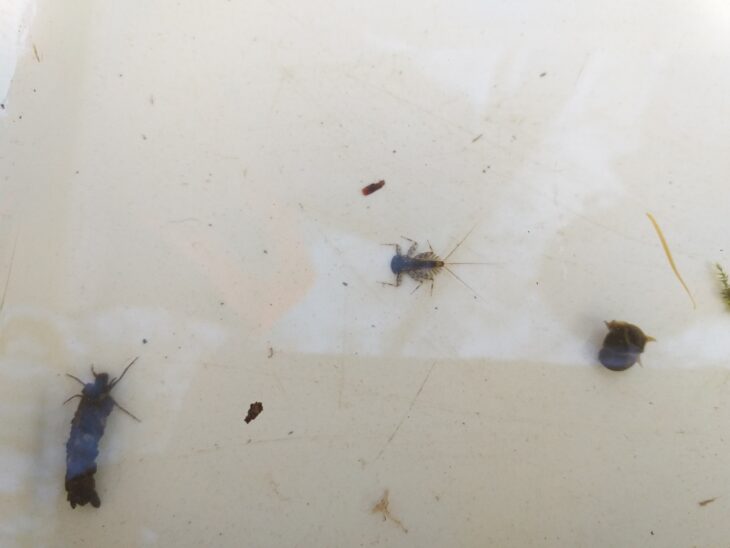
The count will give us a score and our threshold score has previously been set by Scottish Environmental Protection Agency (SEPA). If the score isn’t met, we must resample in case of human error. If this happens a second time, we contact SEPA to investigate, in case there has been a pollution incident upstream.
Monthly sampling gives a snapshot of how different species may vary in number throughout the year and gives a reliable chance of catching a pollution incident. Surveying can take two to four hours depending on how many individuals are present. In July we counted approximately 2000 cased caddisfly larvae! The data is used to give us an idea of how healthy our rivers are throughout the UK and if there are any measures that need to be taken to improve conditions for wildlife.
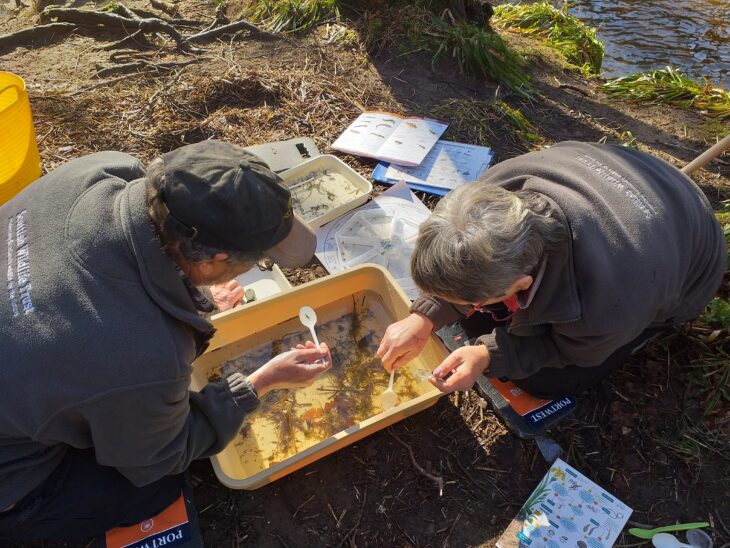
These freshwater invertebrates feed fish and wee birds like dippers, a small bird synonymous with Falls of Clyde. You can easily spot a dipper by looking for it at rest, when it will sit on a rock and bob up and down, hence the name. They “fly” under the water much like penguins do and root around under rocks looking for food. If you see dipper are present, you know your river is in good health.
Get involved
If you are interested in monitoring the health of your local river, email info@riverflies.org to find out where your local group is.
Volunteers are also welcome to join the Falls of Clyde Ranger to undertake the monthly Riverfly Survey.
Help protect Scotland’s wildlife
Our work to save Scotland’s wildlife is made possible thanks to the generosity of our members and supporters.
Join today from just £3 a month to help protect the species you love.
Preface
In 2021, we set up a monitoring group at Falls of Clyde Wildlife Reserve to survey the River Clyde, running through the reserve, to get a picture of how healthy …
